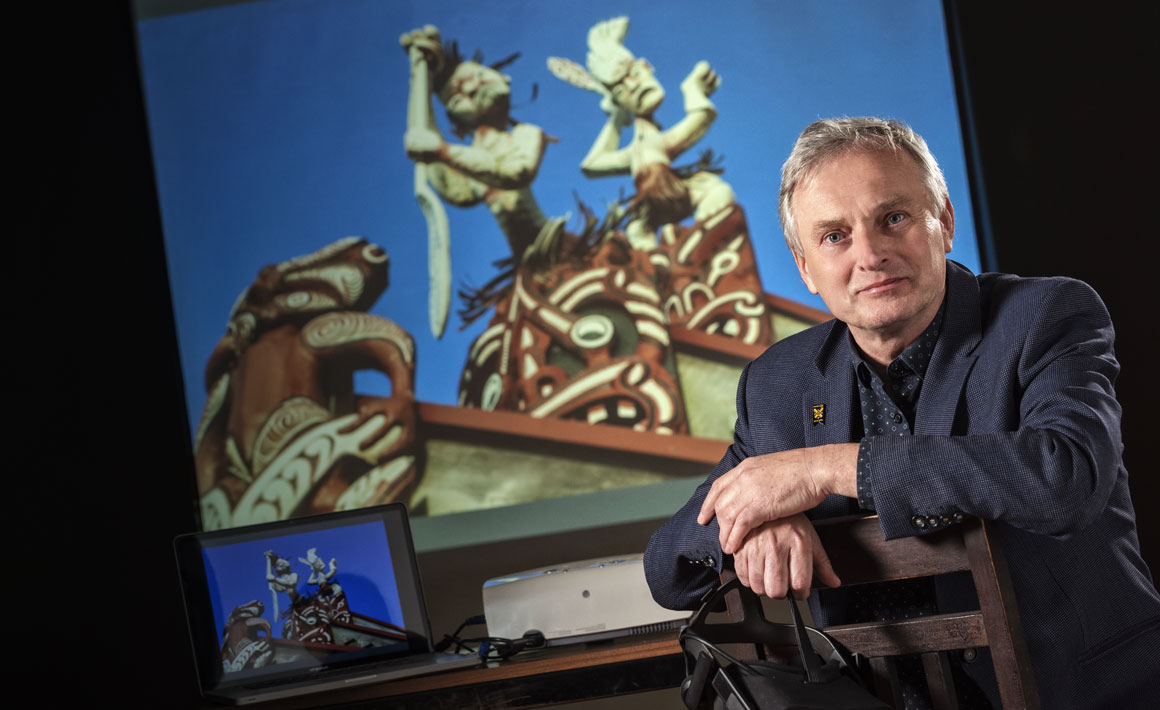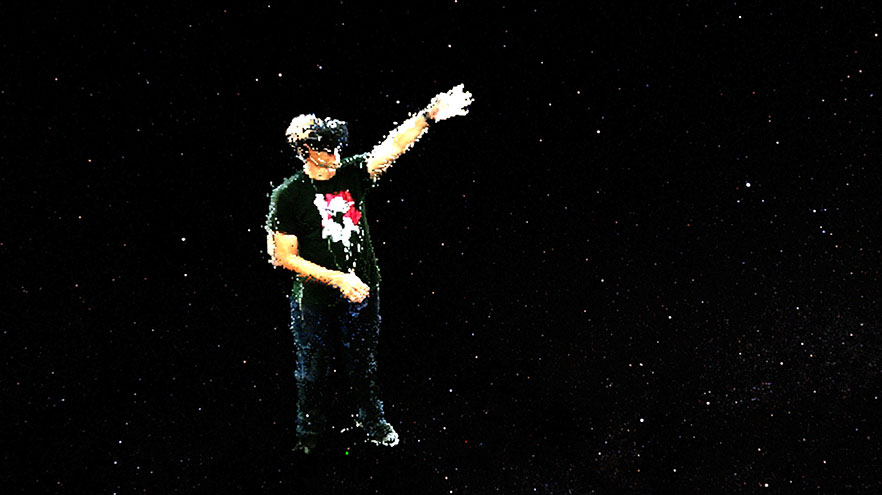 Professor Holger Regenbrecht: “We're hoping this will enhance public understanding of our cultural heritage."
Professor Holger Regenbrecht: “We're hoping this will enhance public understanding of our cultural heritage."The University of Otago is collaborating in the leading-edge Ātea project to enable Māori to remain connected via a virtual 3D marae.
When you no longer live close to home it is often difficult to stay connected to your iwi, to your whānau and to your marae.
But what if mixed reality (MR) technology allowed you to be at home without travelling there? And what if you were also able to be with, to see and to listen to your koroua (elders) telling the traditional stories of your people?
A leading-edge collaboration between the Awarua Rūnanga in Bluff, the University of Otago Business School, and the Universities of Waikato and Canterbury, aims to enable Māori to be always connected as part of the Ātea Spearhead project.
Project lead Associate Professor Hēmi Whaanga (University of Waikato) approached Otago's Information Science Department to work with his marae, Te Rau Aroha, and with the Awarua Rūnanga with the idea that virtual reality could help connect their iwi.
"This fits with our goal of moving virtual reality beyond the realm of gaming into technology doing good, and this work extends Otago's reach into the community in a very new way.”
Otago's Information Science Head, Professor Holger Regenbrecht, was quick to see the benefits. "This fits with our goal of moving virtual reality beyond the realm of gaming into technology doing good, and this work extends Otago's reach into the community in a very new way. We're hoping this will enhance public understanding of our cultural heritage."
The resulting Ātea Spearhead project they developed has four work streams:
- customised repository
- non-consumptive data access model
- machine learning model that delivers text-to-speech and speech-to-text for te reo
- framework for telepresence, including presence and co-presence, involving virtual, augmented and mixed realities.
Telepresence is like video-conferencing in 3D. It allows people to engage with each other from separate locations – giving the appearance and perception that they are actually present in the same location.
Several off-the-shelf, but specialised, cameras provide a view of a three-dimensional environment in real time, while enabling viewers wearing a virtual reality headset to be “present” and to interact “normally”, also in real time, within that environment (see voxelvideos.org).
The use of this type of technology could, therefore, make a virtual visit to an actual marae a shared interactive experience.
The Otago team, responsible for developing the telepresence framework, have used MR to prototype telepresence experiences for Te Rau Aroha marae in Bluff, the world's southern-most marae.
They have also been working closely with Awarua to create interactive narratives – using the telepresence prototype to transfer traditional Māori knowledge via storytelling in a totally unique medium.
Graphic designers within the Ātea project are developing methods to conceptualise Māori artefacts as controlled 3D avatars for storytelling.
Local kaumatua Bubba Thompson has already narrated 12 scenes of a Ngāi Tahu story in English and te reo.
In another recording, Whaanga explains the Māori night sky using a first version of the new MR system. Such narrations enable viewers to immerse themselves within stories, experience the changing environment and use the artefacts as the stories progress.
The first stage of the project is now complete and the outcomes of tranche two are expected within the next three years.

The long-term benefits
Iwi- and hapū-based organisations, businesses and community groups will progressively assume a greater role in using and customising this technology to tell their own stories.
A longer-term objective of the Ātea project is to normalise the visibility and use of te reo Māori within Aotearoa New Zealand. In doing so, the focus is to develop Māori digital capacity and engagement to advance Māori capability and leadership within the wider New Zealand economy.
Ātea aims to align and network with Māori in iwi organisations, industry and communities, while collaborating with (or employing) tohunga, technology experts and leading academics engaged in indigenous data sovereignty and digital repositories.
The prototypes resulting from the four work streams can be used as templates to support this capacity development.
Funding
- Science for Technological Innovation National Science Challenge – MBIE
